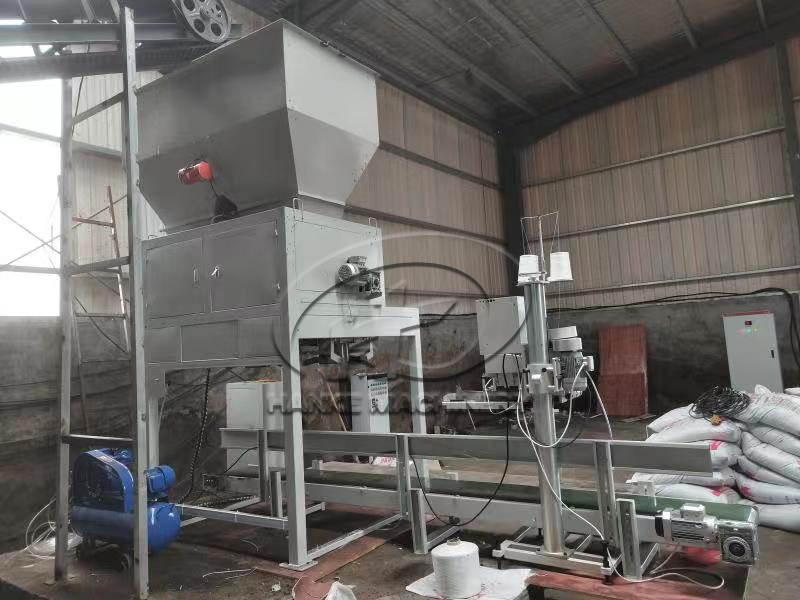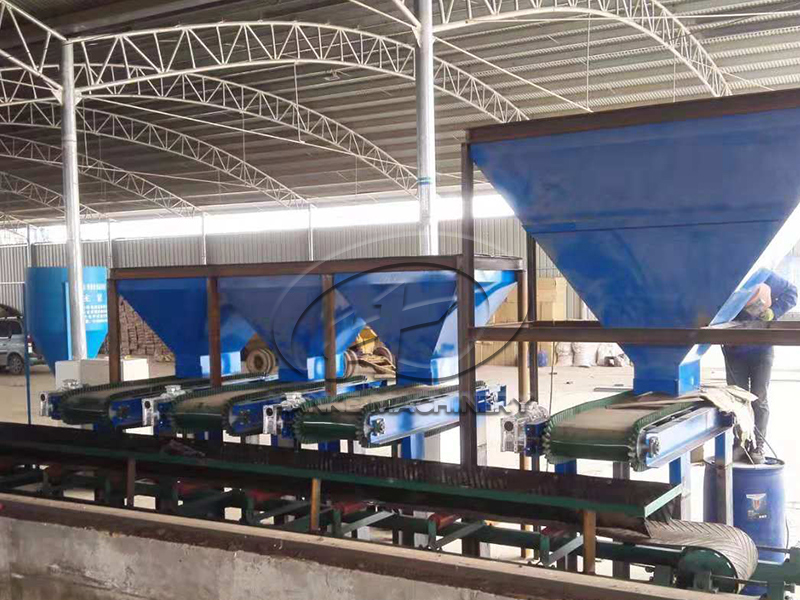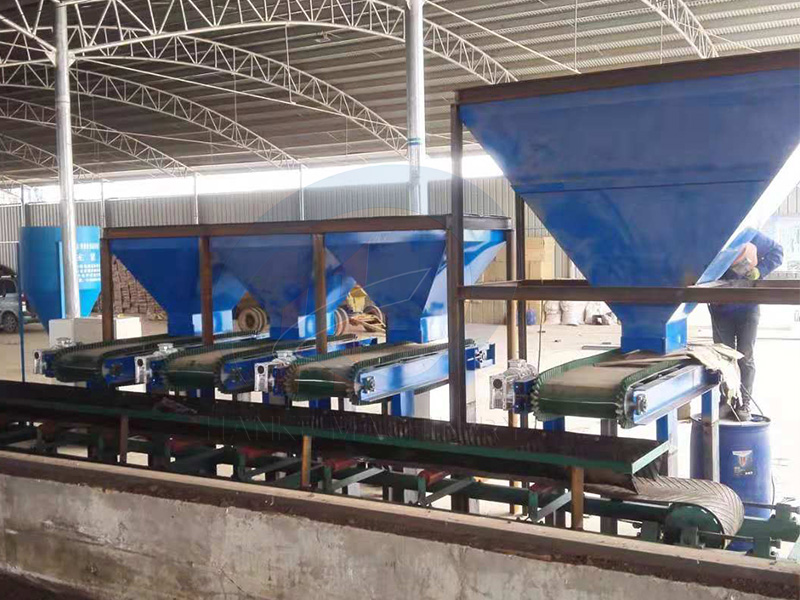 HOME > News > Industry News > How to select a fully automatic multi-element feeding silo for nitrogen, phosphorus and potassium? S
HOME > News > Industry News > How to select a fully automatic multi-element feeding silo for nitrogen, phosphorus and potassium? S Update time : 2025-10-12 Publisher:Zhengzhou Hanke Machinery
The selection of a fully automatic multi-element feeding silo for nitrogen, phosphorus and potassium, as well as the choice between static and dynamic scales, is a very professional and crucial issue. The following is a detailed introduction and analysis of Zhengzhou Hanke Machinery.
Selection Guide for Fully Automatic Multi-Element Feeding Silos of Nitrogen, Phosphorus and Potassium
Selecting a suitable fully automatic batching system is the core to ensuring the stable quality and production efficiency of compound fertilizers, water-soluble fertilizers and other products. The selection should take into account the following key factors comprehensively:

1. Clarify the process requirements and production capacity
Raw material characteristics: The physical properties of materials such as nitrogen (such as urea, ammonium salts), phosphorus (such as monoammonium phosphate, superphosphate), and potassium (such as potassium chloride, potassium sulfate) vary greatly, including fluidity (easy to flow/viscous), hygroscopicity, corrosiveness, bulk density, and particle morphology. This is the basis for selection.
The complexity of the formula: The number of raw material types that need to be mixed (such as 8, 12 or more) determines the number of mixing bins (weighing hoppers).
Production capacity: The processing capacity of the system is determined based on the hourly output or shift output requirements of the production line (such as 5 tons, 10 tons or more per hour).
2. Core configuration selection for the fully automatic multi-element feeding silo of nitrogen, phosphorus and potassium: static scale vs. dynamic scale
This is the top priority in selection. The principles and applicable scenarios of the two are different.
Static scale (batch batching scale
Working principle: During the weighing process, the silo and the feeding equipment (such as a screw feeder) are completely disconnected from the mechanical connection and remain in a "stationary" state for precise weighing. A two-stage feeding method of "fast - slow" is usually adopted to improve accuracy and speed.
Advantages
Extremely high precision: Eliminating the interference of vibration, shock and tare weight of the feeding equipment, the static weighing accuracy can usually reach 0.1%FS or even higher. This is an ideal choice for producing high-quality compound fertilizers with strict formulas.
High consistency: The proportion of each batch of materials is extremely precise, with small differences between batches.
Disadvantage
The speed is relatively slow because the cycle process of stopping, weighing, unloading and restarting needs to be completed.
The system structure is relatively complex and may occupy a slightly larger area.
Applicable scenarios: Strongly recommended for the production of multi-element formula fertilizers containing nitrogen, phosphorus and potassium. Since the proportion of chemical fertilizers directly affects the fertilizer efficiency and the growth of crops, the requirement for precision is of primary importance.
Dynamic scale (continuous batching scale
Working principle: Materials are weighed during continuous flow (such as through belt scales or loss-in-weight scales), and the proportion is controlled by real-time monitoring of the flow rate and adjusting the feeding speed.
Advantages
Continuous production and high output: No start-stop cycle is required, making it highly suitable for large-scale continuous production of a single or a few types of materials.
The equipment is compact and the cost may be relatively low.
Disadvantage
The accuracy is relatively low: Affected by factors such as material fluctuations, belt slippage, and vibration, the accuracy is usually 0.5%-1%FS, which is difficult to meet the requirements of precise multi-element proportioning.
There is a transition section when switching formulas, which can easily cause cross-contamination.
Applicable scenarios: Mainly used for quantitative feeding of single raw materials or pre-mixing processes with low requirements for proportioning accuracy. It is not very suitable for terminal fertilizer production with precise proportioning of multiple elements.
For the fully automatic multi-element feeding silo of nitrogen, phosphorus and potassium, the preferred solution is to use a static scale (batch batching scale). Although the investment may be slightly higher, its extremely high precision and excellent batch consistency can ensure that every batch of fertilizer you produce fully meets the preset nutritional standards, thereby guaranteeing fertilizer efficiency and product reputation. The accuracy of proportioning is the lifeline of product quality, and static scales provide the most reliable technical guarantee for this.
Suppliers of fully automatic multi-element feeding silos for nitrogen, phosphorus and potassium can contact Zhengzhou Hanke Machinery for detailed raw material lists and production capacity requirements. Professional engineers will design the most suitable modular solution for you.

see details +

see details +

see details +

see details +

 Tel:+86 17319777703
Tel:+86 17319777703
 E-mail:hkautomaticpack@foxmail.com
E-mail:hkautomaticpack@foxmail.com
 Address:Xingyang City, Zhengzhou City, Henan Province.
Address:Xingyang City, Zhengzhou City, Henan Province.
Privacy Policy Copyright © Zhengzhou Hanke Machinery Equipment Co., Ltd Co., Ltd.